Replacement cuff toilet bowl
Toilet in an apartment or private house is no longer a luxury. And the main sanitary device of this room is a toilet. This simple-looking device works without problems for many years, but sometimes it also needs repair work, for example, when a leakage appears at the junction of the toilet bowl outlet and the sewage system. In this case, it is necessary to make the replacement of a special part - the cuff. Make it a force for everyone. And in more detail about how to replace the cuff toilet bowl, will be discussed in this article.
A little bit about the design and purpose
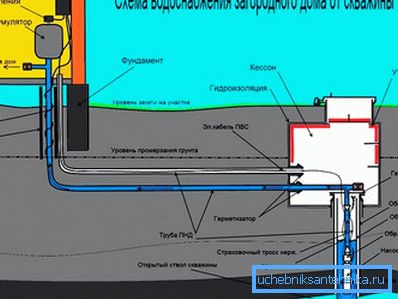
The cuff is a product made of polypropylene or polyethylene. The use of these materials in the production is due to their positive characteristics. First, from polypropylene and polyethylene can be made parts of almost any configuration. Namely, such products as the toilet cuffs differ in their complex shape. Secondly, polymeric materials are rather plastic, which provides a reliable and tight connection.
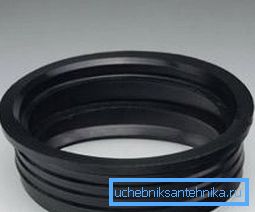
The design of such parts may be different, but in any case, it has the same elements. While the longitudinal axis of each of the rings can be shifted relative to each other or lie on one line. The first option is used in the case when the release of the toilet and the sewer nozzle do not coincide with each other.
Depending on the need, you can use both a short and a long version of the toilet bowl cuff. The choice will depend on the distance between the sanitary unit and the sewer system.
Tip! The most popular option of a cuff can be considered a corrugation. Thanks to a corrugated pipe, you can connect almost any complexity. This allows you to install the toilet in the place of your choice, regardless of the distance to the sewer pipe.
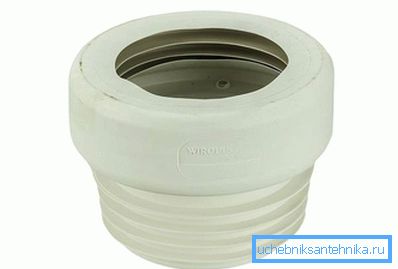
The principle of using the cuff for the toilet is quite simple. One of his ring is pulled on the release of the toilet. The second end is inserted into the sewer pipe. At the same time the sufficient level of tightness is provided. Neither liquid nor unpleasant odors will pass through such a compound.
The installation procedure of the new cuff
If you notice a leak in the place where the cuff is installed, it is time to think about how to change the cuff. Of course, you can try to more closely put the product on the release of the toilet. If the cause of the leakage is the displacement of the cuff, then such actions will help.
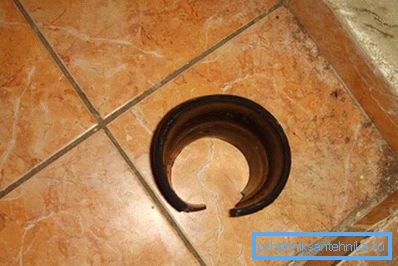
But, as a rule, there is rarely anyone doing something behind the toilet, which means that it is unlikely that the cuff will be moved. Therefore, the most common cause of leakage is the appearance of cracks. Some home craftsmen offer to seal the appeared gap with silicone sealant or using other available tools (for example, to wrap a rubber strip). But, based on the low cost of the cuff for the toilet, it will be more rational to replace it. In this case, you will have one hundred percent guarantee that in the coming years the flow will not appear again.
The very work on changing the cuff on the toilet will not cause great difficulties, even among beginners. There is no need for special skills. Also, you do not need to prepare any tools. All that is needed for work is the cuff itself and the knife or chisel.
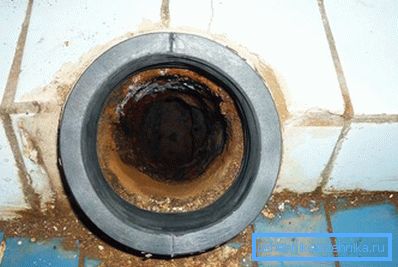
All actions occur according to the following algorithm:
- First of all, remove the old cuff. To do this, it is enough to pull it out of the sewer pipe and pull it off the toilet outlet.
- Then you should prepare all the surfaces. Thoroughly clean the toilet outlet and the sewer pipe from deposits, rust and mortar residues (if any). If you do not do this work, then the new cuff will sit unevenly. And this will lead to the reappearance of a leak.
- To keep the cuff firmly in place, thoroughly dry all surfaces. If there is even a slight moistening, a completely reliable and tight connection may fail.
- Then you can miss the entire perimeter of the cuff with sanitary silicone sealant. This is done both with the inner surface of the end, which will be put on the release, and with the outer side of the ring, which will be inserted into the nozzle. Some experts do not use sealant. In their opinion, the cuffs themselves are quite reliable, so using additional sealing materials is a waste of money. Everything will depend on your personal opinion.
- Now comes one end (the one where the ring has a larger diameter) to put on the release of the toilet bowl. This should be done with little effort, but do not overdo it. The cuff should sit firmly in place.
- The other end of the cuff is inserted into the drain pipe.
If there is a desire, then it is possible to additionally process the joints with silicone sealant.
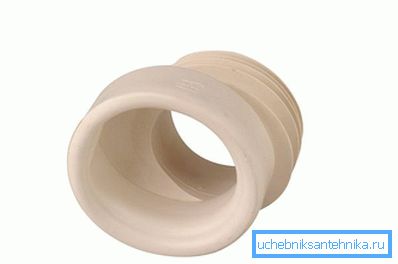
This method of replacing the cuff is suitable if the distance between the outlet and the socket is no more than 5 cm. However, if they are located on the same axis, then a straight cuff is used. At the shift of axes the eccentric is applied. In this design, the axis of the cuff ring is shifted to the desired distance.
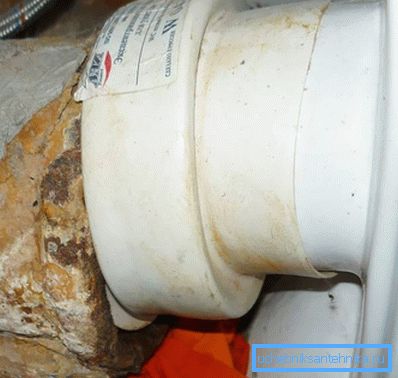
If the distance between the release of the toilet and the sewer pipe is large or the displacement of their axes does not allow the use of an eccentric, then it is better to use a corrugation. Thanks to a flexible corrugated pipe, it will not be difficult to connect a toilet, regardless of where it is installed.
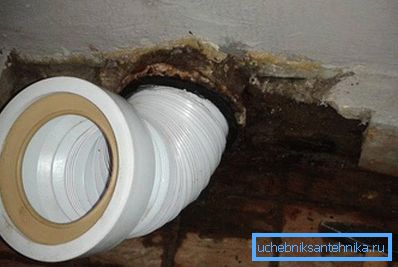
Changing the location of the cistern
Some designs of the toilet mean the installation of a flush tank is quite low. In this case, to put the cuff in such a way as described above is quite difficult. Therefore, it is better to use another option for installation.

Here is what you need to do:
- It is necessary to find a special added shelf. One end of the cuff is put on it and secured with a special clip. Some masters instead of the clamp use conventional wire.
- Next, the added shelf is fixed on the toilet (while the other end of the cuff is put on the drain pipe). For this purpose, suitable bolts are used. Do not be very zealous when tightening - you risk getting a crack on the toilet or chipping.
- To fasten the cuff, you can also use a suitable size clamp or wire.
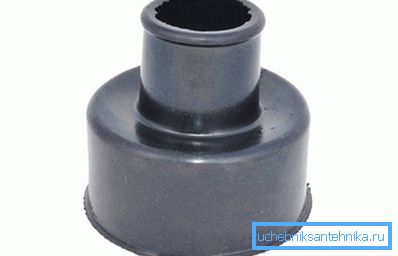
To increase tightness, the joints are treated with silicone sealant. Thus it is possible to install the cuff on the toilet with a low location of the cistern.
Video
This video shows how to replace a corrugated toilet and install the toilet itself: